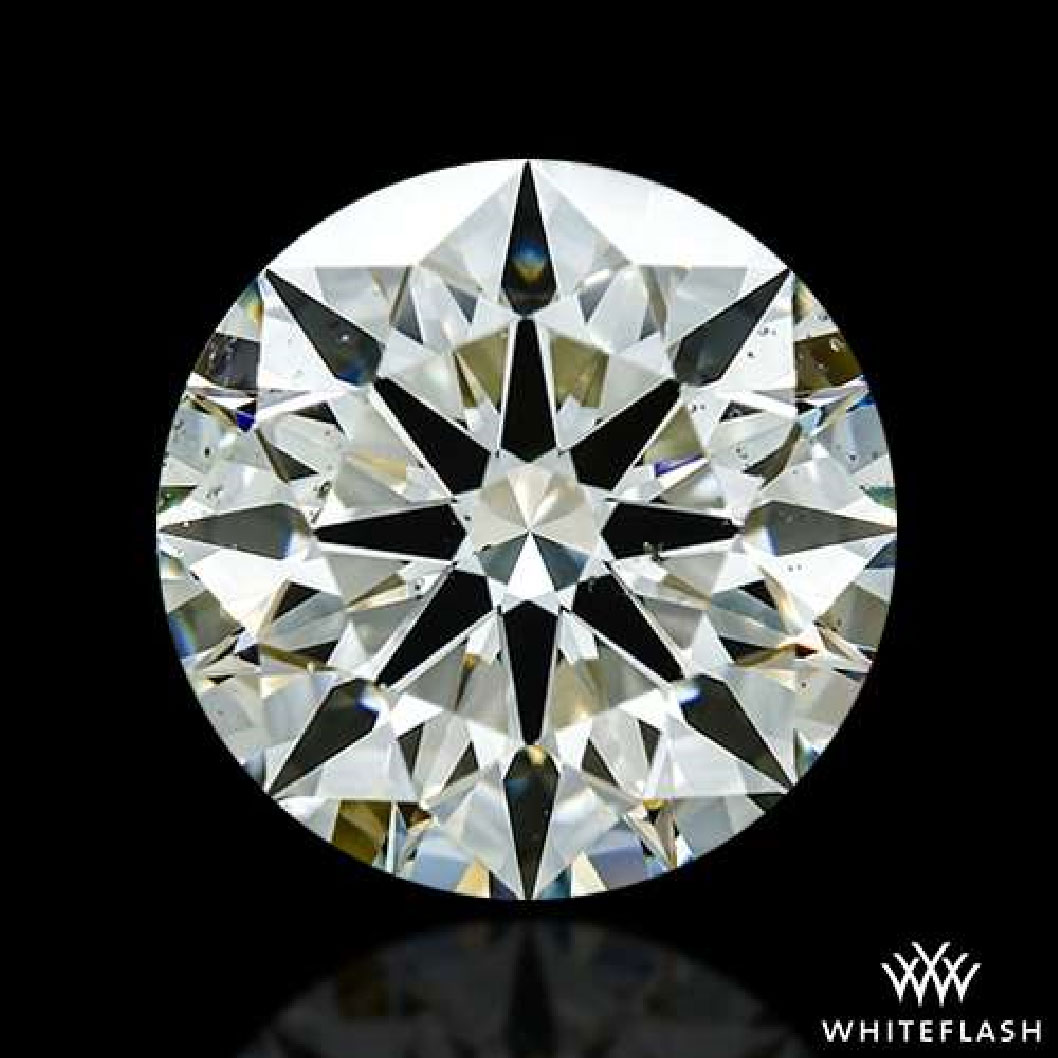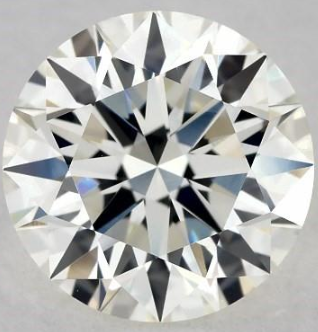This article has mentions of products from one or more companies, and I may receive compensation if you purchase those products following reading my recommendations.
A J color diamond sits at the end of the near-colorless range represented in the Gemological Institute of America’s color scale. What this means is that, of the near-colorless range, they’re the most likely to show a slight yellow hue, which is caused by the presence of nitrogen in the diamond.
However, when you find a J color diamond that’s of high quality, and set it into a complementary setting, you’ll find that it will be just as impressive as a colorless diamond. So how you can you ensure you’ll find a good quality J color diamond? What kind of setting should you pair it with? How much will it cost? Read on to find out.
Comparing J Color Diamonds with Other Grades
In the eyes of some, more critical diamond buyers, J color diamonds are seen as having too much yellow color. This is actually an exaggeration, and only works to favor the jeweler looking to sell more expensive diamonds to unsuspecting customers. The reality is, J color diamonds can be stunning, but it might take a little more work to find the right one that does this. The first benefit of this is that you could be saving yourself a massive amount of money. Let’s compare two diamonds.
 |
 |
| Cut: Excellent | Cut: Excellent |
| Color: J | Color: D |
| Clarity: VS1 | Clarity: VS1 |
| Carat: 1 ctw | Carat: 1 ctw. |
The first diamond, a 1.00 ctw VS1 diamond of J color is an affordable and impressive diamond. The second diamond has exactly the same characteristics, yet has the best color grade available—a D grading. What this means is that the diamond to the right is $3,220 more expensive, even though the only key difference is the coloration.
To the naked eye, it’s quite difficult to notice any yellow coloration in the first diamond. A good cut disguises color by offering optimal light refraction, and if this diamond was to be placed in a white gold or platinum setting, any yellow hue would be further negated. What this means is that, if you find the right diamond that has a high-quality cut and clarity, you could save yourself thousands of dollars that could be spent elsewhere (such as your honeymoon if you’re purchasing an engagement ring).
Pricing a J Color Diamond
As it is one of the Four Cs—the four characteristics by which a diamond is categorized—color is a hugely important factor that works to dictate the price of a diamond. The obvious rule is that, the higher the color quality, the higher the price. A D color diamond will always be more expensive than a J color diamond (provided that there isn’t a massive difference in any other characteristic, such as carat weight).
While all diamonds are priced differently, we can state that a J color diamond will be less expensive than its higher-graded counterparts. What this means is that you might be able to save thousands of dollars when buying a J color diamond and still be able to come away with a fantastic looking diamond.
Should You Buy a J Color Diamond?
While there is a potential for great value for money, you should still remember that a J color diamond sits at the very end of the near-colorless portion of the diamond color scale. The difference between a D and a J may be obvious, meaning you have to make sure you’re working to find the best quality J color diamond you can.
There are ways to go about this. For example:
- Obviously, choose a reputable diamond retailer who sells J color diamonds, such as Whiteflash (best for diamond quality), Blue Nile (best selection), or James Allen (great for fancy diamonds). These three retailers are our favorite, however, you can find alternatives in our diamond reviews section.
- Always opt for an eye-clean diamond. This will mean that the clarity of your diamond is high and won’t work to make any yellow hue more obvious.
- If you’re pairing the J color diamond with a setting, such as an engagement ring, choose a white metal, such as white gold or platinum. This works to lessen any yellow hue that might be present within the diamond, as the diamond will reflect the color of the metal it’s placed within.
- As with the previous point, avoid pairing a near-colorless diamond such as a J with metals like rose or yellow gold.
Finally, recognize that different diamond shapes work to either disguise color or bring more attention to it. Shapes such as Pear and Emerald can make color more apparent, while a Round Cut helps to disguise the color of the diamond.

While J color diamonds may show a little yellow in certain lights, it’s quite hard to see when adorning a ring finger. The above diamond, a 1.072 ct J VS2 A CUT ABOVE® Hearts and Arrows Diamond from Whiteflash, is a great example of how a J color can look fantastic, clean, and visually appealing. Image credit: Whiteflash
Using J Color Diamonds in Halo & Pavé Settings
One potential issue for the J color diamond is when it is used in settings that include other diamonds, such as halo and pavé. When choosing these designs, make sure that the diamonds used in the setting are similar, if not the same, color grade as your chosen J color diamond.
The problem is here that, if they’re not a similar color, the center diamond’s near-colorless statues will be all the more obvious. The overall key to utilising a J color diamond is to make it appear as colorless as possible, so if you’re pairing it with actual colorless diamonds, it’s going to look yellow.
The same rule applies to a three-stone setting. If your central stone is a J, make sure the two side stones are either Js or I color diamonds.
Our Final Thoughts
Like with any diamond, it takes research to find the right one. This will always apply to a J color diamond, of which good and bad examples can be found.
 This J color 1.00 Carat Round Diamond is impressive due to its high clarity, Excellent cut, and very affordable price. |
 This J color 1.01 Carat Round Diamond is less impressive due to its poor clarity, which works to bring much more attention to the yellow coloration inside the diamond. |
We’d recommend choosing a high cut quality J color diamond and pairing it with a solitaire setting ring made of white metal. Opting for this combination of features will result in a great looking ring at a much more affordable price than higher graded counterparts.
When buying a diamond, remember these tactics:
- If buying near-colorless diamonds, choose Round Cuts to better disguise color.
- When choosing a setting, opt for white gold or platinum to further negate the presence of any yellow.
- If choosing an alternate diamond shape or pairing with other diamonds, it may be worth choosing a higher color-graded diamond.
If you’ve found this guide helpful, there’s much more where it came from. Here at Diamond Expert, we’ve got an entire education section that you can use to brush up on your diamond knowledge and make sure that every diamond purchase you make offers you great value for money and, ultimately, a diamond that you can treasure.
The best place to purchase loose cut diamonds in my opinion is Whiteflash, I would recommend their signature line A CUT ABOVE® Super Ideal diamonds. If you’re looking for lab diamonds than Brilliant Earth offer the best selection of lab diamonds available online, I would also add James Allen.
